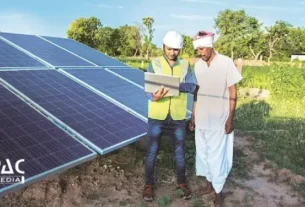In Short : Two offshore wind tenders totaling 4.5 GW have been canceled by the Solar Energy Corporation of India (SECI), which cited a lack of developer interest, even for one supported by viability gap funding (VGF). The action highlights the policy and infrastructure obstacles that offshore wind faces in India, notwithstanding the rapid rise of solar power.
The Difficulties With Scaled Offshore Wind
Due to low developer participation, SECI’s previous tenders for 500 MW Gujarat projects (in September 2024) and 4 GW sea-bed leases (in February 2024) failed. Investors are nonetheless cautious in the absence of clear frameworks, PPA confidence, or infrastructure clarity, even in the face of policy momentum, which includes transmission licenses for Gujarat offshore wind.
Strategic Consequences Of Adoption Of Renewable Energy
Despite its potential to diversify India’s energy mix, offshore wind is not as effective as hybrid systems and solar panel-based deployments, which have more developed supply chains and less complicated infrastructure. Asset-level priorities and even the sentiment surrounding the share price of the solar industry are influenced by investor confidence, which seems to favor solar-dominant projects that can generate consistent returns.
The cancellation also highlights how important it is to support solar system designs and grid integration strategies that make use of current infrastructure, possibly reallocating funds to more scalable and proven solar and energy storage options.
Effects on the Transition to Sustainable Energy
Although plans for offshore wind are shelved, the change in emphasis confirms India’s course toward sustainable development powered by dispersed generation and modular solar technology. Since offshore wind is currently thought to need a lot of capital, rooftop systems, utility-scale solar farms, and hybrid renewable-storage projects may have a greater influence on India’s clean energy growth.
The Bottom Line
The practical shift toward renewables with less complexity and quicker scalability is reflected in SECI’s choice. Although offshore wind is still strategically significant, solar energy, tested technology, and deployment strategies that support both national clean energy goals and economic sustainability continue to be the key drivers of India’s renewable energy momentum.




